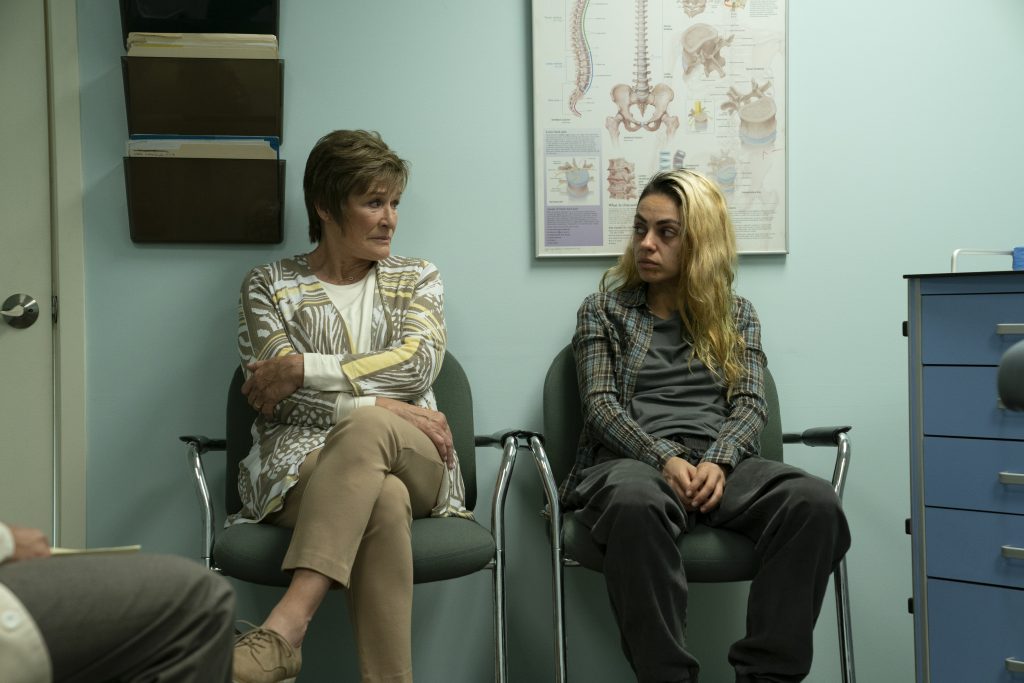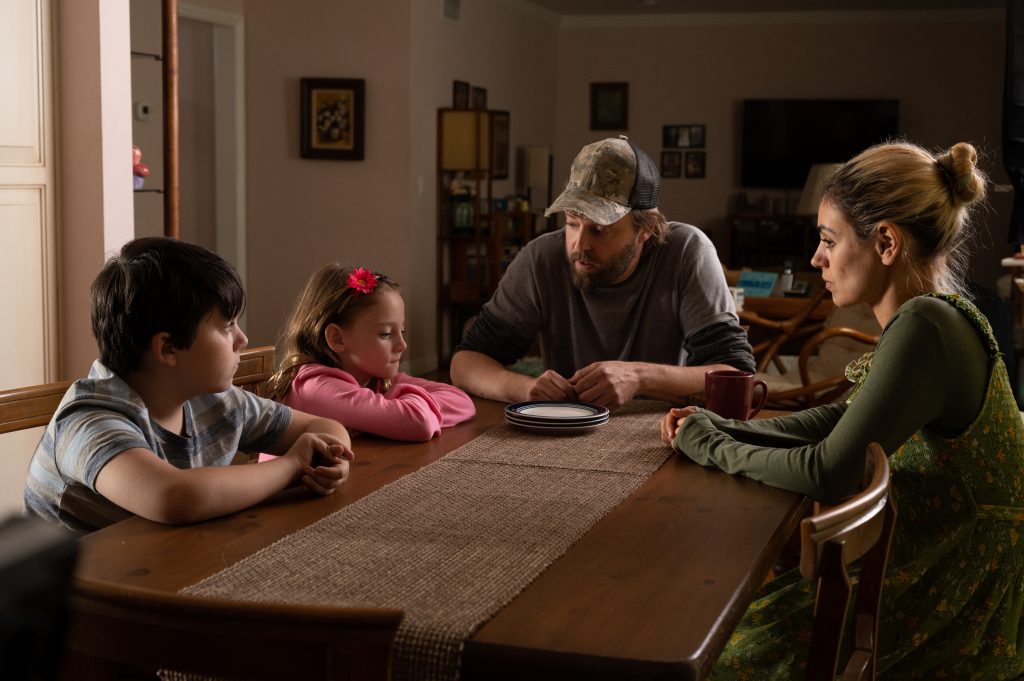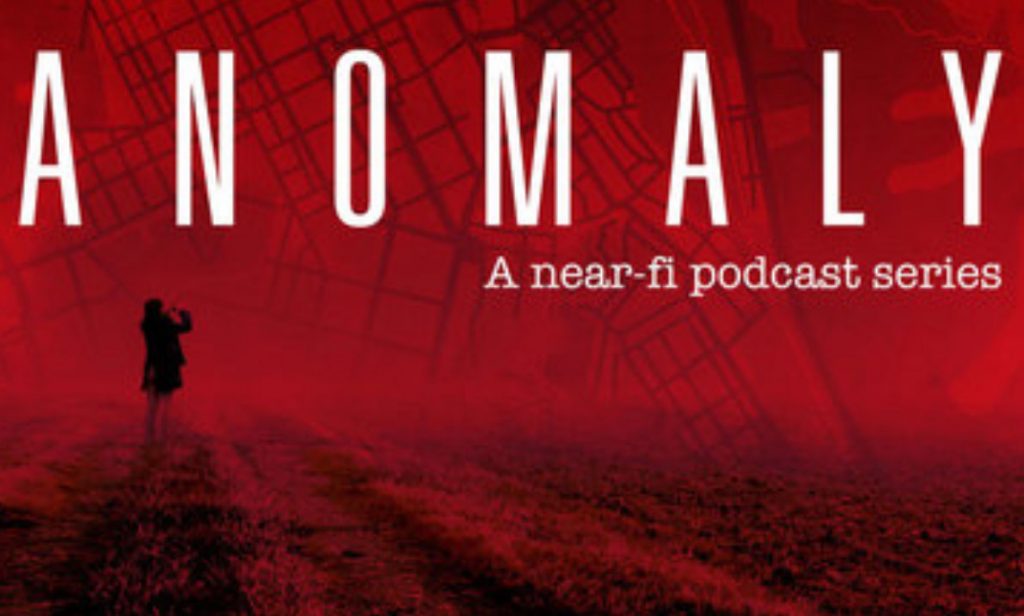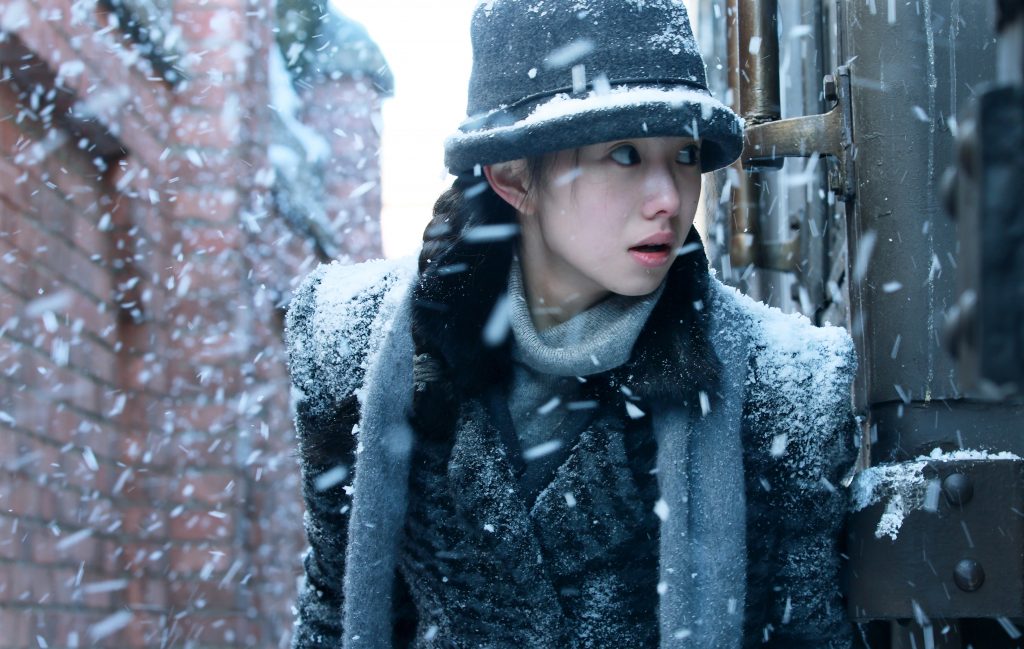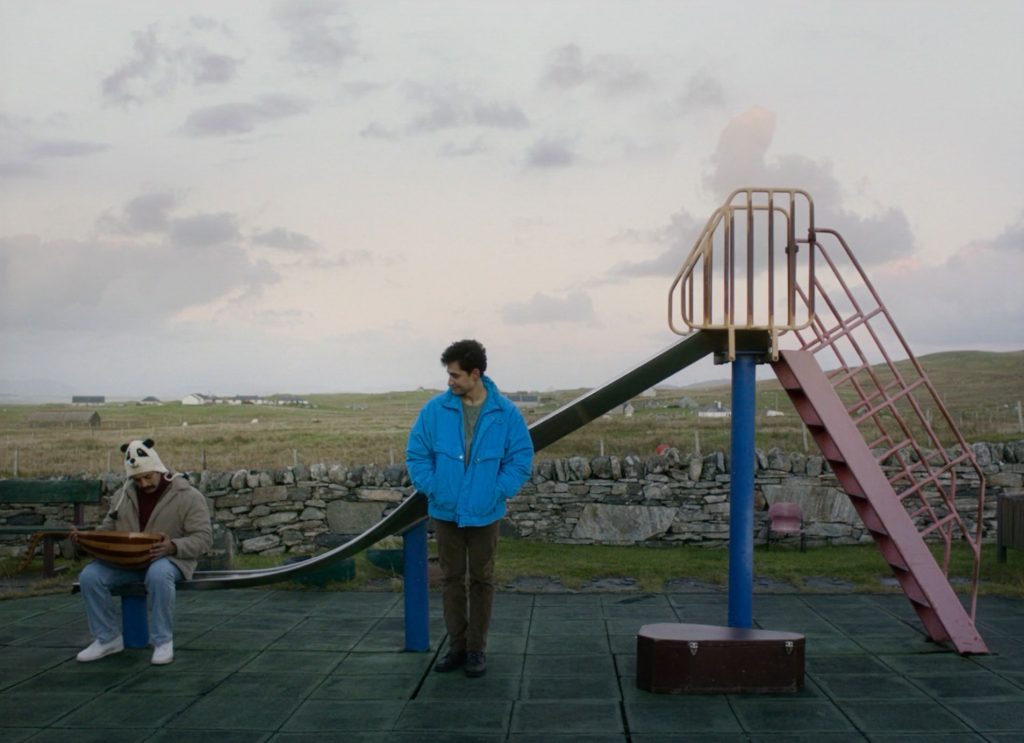May 6, 2021
by Carla Hay
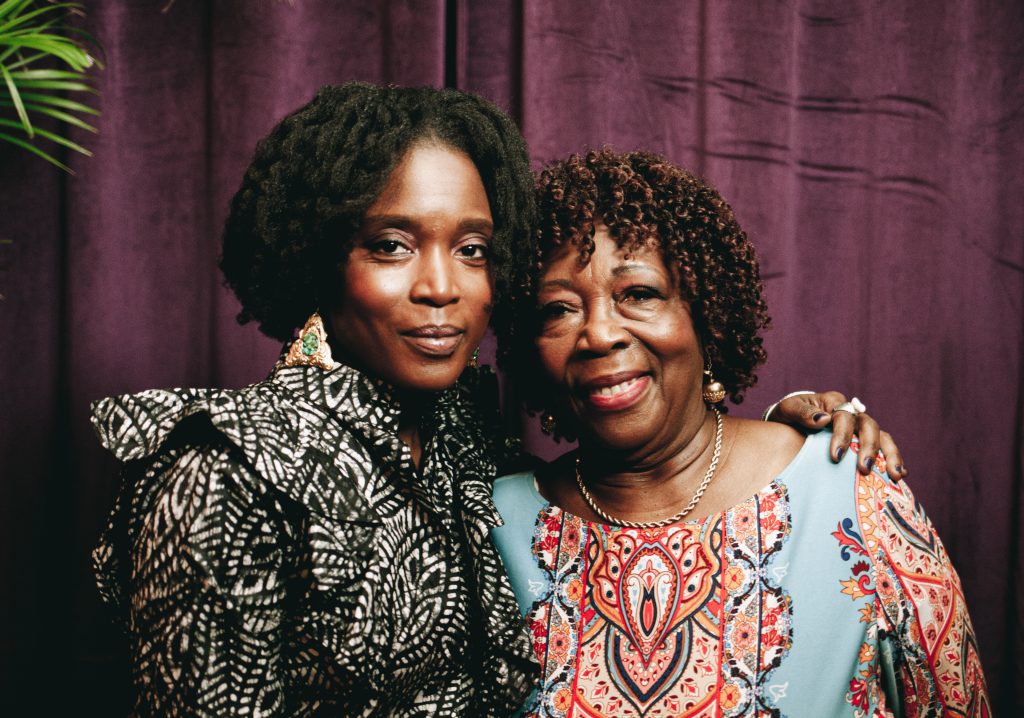
Directed by Shantrelle P. Lewis
Culture Representation: The documentary “In Our Mothers’ Gardens” features a variety of African American and Afro-Caribbean women discussing their heritage and the relationships they’ve had with their mothers and grandmothers.
Culture Clash: Many of the women talk about the unique challenges that black women face when managing self-care and trauma.
Culture Audience: “In Our Mothers’ Gardens” will appeal primarily to people who are interested in vivid stories about black women in North America and their appreciation of family roots and ancestry.

Black women have a unique resilience that is celebrated in the storytelling documentary “In Our Mothers’ Gardens,” which focuses specifically on black women in North America who share candid tales about themselves, their mothers and their grandmothers. Directed by Shantrelle P. Lewis, “In Our Mothers’ Gardens” will inspire and entertain viewers who appreciate a variety of fabulous and outspoken women telling their truths.
The documentary has more of a conversational tone than an academic or historical tone. Because these stories are so personal, they provide snapshots, rather than a broad overview, of the diversity within African American communities. It’s also refreshing to hear these unfilitered stories in a documentary coming from a team of all-African American producers, considering that movies about African Americans are often made by filmmakers who are not African American.
The women interviewed in the documentary are:
- Tarana J. Burke, activist/founder of the MeToo movement
- Brittney Cooper, assistant professor of women’s and gender studies and Africana studies at Rutgers University
- Desiree B.T. Gordon, performer/writer
- Tina Farris, tour manager who has worked with artists such as Lil Wayne, Nicki Minaj and Chris Rock
- Adama Delphine Fawundu, photographer/visual artist
- Titi Fawundu, Adama’s retired mother
- Shantrelle P. Lewis, filmmaker/”In Our Mother’s Gardens” director
- Yolanda Sangweni, senior director of programming at National Public Raadio (NPR)
- Erica Sewell, head of inclusive talent Outreach at Netflix
- Rev. Dr. Theresa S. Thames, associate dean of religious life and the chapel at Princeton
University - Latham Thomas, lifestyle/wellness expert
- Dr. Marta Moreno Vega, educator/activist
- Dr. Kokahvah Zauditu-Selassie, a professor at Morgan State University and a priest of Obatala in the Lukumi/Yoruba tradition
Most of the women have families who’ve lived in the United States for several generations, such as Burke, Cooper, Lewis, Sewell, Thomas, Thames and Zauditu-Selassi. The other women have families with more recent immigrant experiences. Gordon is originally from Antigua. Sequeni was born in South Africa. Vega is a native of Puerto Rico. The Fawundus immigrated to the United States from Sierra Leone.
What all of the women have in common is their respect for how their family histories have influenced them, as well as a strong sense of how they’ve been able to forge their own identities, often while dealing with many adversities. Some of the stories are heartwarming, but not all of the stories are warm and fuzzy.
Farris and Adama Delphine Fawundu speak fondly of having matriarchs in the family who were loving, supportive and experts at making comfort food. Farris comments, “My grandmother has the best advice and the best recipes.” Adama Delphine Fawundu believes she had an amazing trip when she traveled to South Africa for the first time, because she took her mother Titi’s advice of following African tradition of pouring libation for ancestors before her trip. Vega talks about coming from a family with traditions steeped in spiritual healing. Vega says that her grandmother was a spiritualist who liked to wear a lot of white and who loved to cook.
By contrast, practicing priest/spiritualist Zauditu-Selassi says that her mother and grandmothers were spiritual but not the type to go to church on a regular basis. Zauditu-Selassi quips in the movie about her two grandmothers: “One bred horses, and one had 11 husbands. ‘A man is like a bus—miss one and catch the next.’ These are words of wisdom from my grandmother.”
Burke comments that her grandmother Willie Mae was “not a milk and cookies type.” The founder of the MeToo movement shares a story indicating that standing up to abusive people might have been something that she learned from her grandmother. Burke says that when she was a girl, she was slapped by a man in a grocery store for making a bratty comment.
When her grandmother found out, she marched over to the grocery store and demanded an apology. When the store manager did nothing, she broke one of the grocery store windows. “It’s a legendary story in our family,” says Burke with a laugh.
Cooper has family in Louisiana going back for many generations. She remembers her gun-toting grandmother who armed herself to keep the Ku Klux Klan and other threats away. Lewis, who also has family roots in Louisiana, mentions her tough-talking grandmother who didn’t hesitate to discipline the kids in her home. Farris says that her 4’9″ grandmother kept a knife on her at all times. “She didn’t play games,” Farris adds.
The need to be tough and having a means of self-defense isn’t about the “angry black woman” negative sterotype. It comes from the harsh reality that the history of slavery, racial segragation and other civil rights violations have been particularly hard on black women, who have been the targets of a lot of racist hate. And whether or not a black mother has a partner to help raise her children, she is usually looked to as the backbone of the family.
In fact, the stories told in “In Our Mothers’ Gardens” are often about how the women in black families are more likely to be the ones who are the most educated ones in the families. The words “trailblazer” and “badass” are heard when the interviewees describe how their mothers and grandmothers took risks in periods of time when women weren’t expected to get college graduate degrees or start their own businesses.
Thomas says that her grandmother decided to take a cross-country road trip at a time when it was considered “unladylike” for a woman to travel by herself. Lewis calls her mother a “firecracker,” “educated” and “independent,” who taught her the value of being financially independent. And after Gordon’s mother graduated from law school, she passed the bar in New York and New Jersey on her first try, within weeks of each other. (Most aspiring lawyers don’t pass the bar on their first try.)
Sewell, who grew up on Chicago’s South Side, comes from an activist family where the men and women had healthy, loving relationships. She says that her mother taught her that money, more than someone’s race, is the real barrier to power and privilege. “The way the women in our family move,” says Sewell, “they’re unfazed by the word ‘no.'” She continues, “I grew up in a black liberation church where people were cursing from the pulpits, in the name of Jesus though. Jesus was an activist.”
Thames shares fond memories and expresses gratitude for her maternal grandmother, who raised her because Thames’ mother was a crack cocaine addict for many years. (Thames says she still has a difficult relationship with her mother.) Thames describes her grandmother, who was a Head Start teacher, as someone who devoted herself to her family, her church and to her work, which didn’t leave much time for herself.
Self-care and dealing with trauma are topics discussed in the documentary. The general consensus is that black women have a tendency to work hard to care for other people before taking care of themselves. Working hard is part of black women’s psyche, which goes against the negative stereotype that black people are lazy. And because black women are often underestimated, many black women experience the old adage of having to work twice as hard to be considered just as good as a white person.
Most of the interviewees in the documentary say that younger generations of black women are more likely to carve out healthy “me” time or seek therapy for problems that need professional help, compared to older generations. However, many black women come from cultures where people are taught that wanting “me” time is selfish, and seeking help for problems is a sign of weakness. There’s also the matter of racial inequalities in income that can determine what people do in their leisure time. Take a look at the racial demographics of high-end retreats and cruises, and that will give people an idea of who can afford these types of vacations.
Burke, Lewis and a few other women in the documentary also talk about the culture of silence that black women experience when opening up about trauma. Farris says that her grandmother had to become “completely independent” at 19 years old, when her single mother and two siblings died in a fire, and that trauma affected the restrictive way in how Farris’ mother was raised. Farris mentions that this family tragedy is one of the reasons why her grandmother didn’t like to see people cry.
Cooper, who describes her mother as a “loner” and a “rebel,” reveals that a dark family secret was kept from her for most of her childhood: When her mother was pregnant with her, her parents were shot by an angry ex-boyfriend of her mother’s. Luckily, Cooper’s parents survived the shooting. Cooper says that her family has such a difficult time talking about this traumatic experience, that she didn’t get the whole story of what happened, and was only able to figure it out from bits and pieces told to her over the years.
It’s mentioned in the documentary that the attitude in many families is to “keep it moving” after a tragedy, and that trauma should be compartmentalized. Black women are often raised to keep domestic problems in the family, even when these problems should be reported to authorities. And that’s probably because there are too many examples of how someone’s race can affect the type of justice that someone gets in America.
Sangweni and her family members experienced apartheid South Africa before she moved to the United States. She comments on what she’s learned: “No matter what white people are doing to us, you will never take away my joy and my pride.” She adds, “Laughter, to me, is my safe space.”
Speaking of laughter, Zauditu-Selassi gets a lot of screen time with her intentionally humorous stream-of-consciousness rambling. She’s feisty and full of stories—so much so that there’s a segment about 10 minutes long with nothing but Zauditu-Selassi sharing her thoughts and memories while she’s cooking in the kitchen. She peppers her monologue with the occasional: “You feel me? I know you do.”
Zauditu-Selassi says that she comes from a long line of “vain women from New Orleans,” as she is doing her makeup and rattles some of her many trinket-like jewelry. (“These are not accessories,” Zauditu-Selassi quips about her jewelry. “These are necessities.”) She also describes an aunt of hers who lived in Los Angeles and was a “millionaire” stylist for clients such as actress Dorothy Dandridge, doctors and other well-to-do professionals. “She was a millionaire, but we were poor in Compton.”
It seems as if the filmmakers found Zauditu-Selassi to be so entertaining, they just wanted to let the cameras roll while she talked. However, the documentary could have used tighter editing, because some of it looks like a mini-biography of Zauditu-Selassi. She’s featured in the movie in a way that’s different from the other interviewees: She’s interviewed in more than one room in her home, and she essentially gives a cooking lesson while in the kitchen. Maybe she should get her own documentary, because viewers will get the impression that she has many more fascinating stories to tell.
“In Our Mothers’ Gardens” has the expected inclusion of several of the interviewees’ family photos and home videos. It’s unclear why Adama Delphine Fawundu is the only one in the documentary whose mother is interviewed, because the movie could have benefited from the perspectives of more mothers of the interviewees. Many of the interviewees make it clear that their mothers were still alive at the time this documentary was filmed.
The documentary has a few moments of whimsy, such as a short segment with black Barbie dolls re-enacting Harriet Tubman’s Underground Railroad. Some of the interviews are also edited so that interview footage looks like it’s inside a graphic of a photograph frame. But the real heart of the movie comes from the stories the women tell about how mothers and grandmothers in their families helped shaped their legacy and are part of the extraordinary culture of black people in America.
Array released “In Our Mothers’ Gardens” in select U.S. cinemas on May 6, 2021, the same day that the movie premiered on Netflix.

